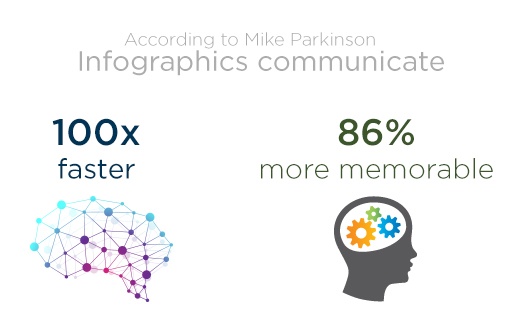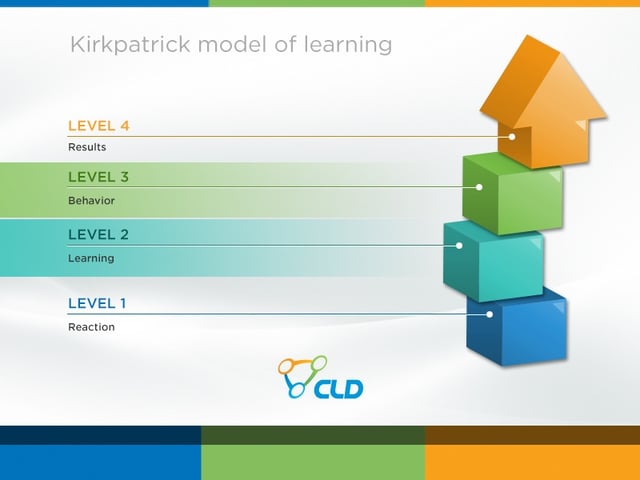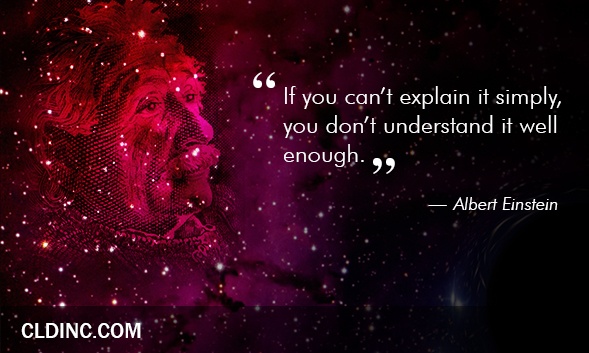ATD 2016 came to a close last week. After having the long Memorial Day weekend to reflect, here are thoughts and takeaways by three CLD staffers who were at the show.
Takeaways by Eric Georgette
The most dynamic presentation I went to was by Michael Bungay Stanier of Box of Crayons, who presented his 5 Essential Coaching Questions. In the spirit of Michael’s great and convincing talk, here are my takeaways from the conference:>
- Leadership isn’t about authority or reaching monetary numbers, it’s about valuing people. Simon Sinek’s keynote address emphasized that the best leaders trust and value their employees. His review of the basic chemical receptors that influence people’s natural, primal needs emphasized the need for leaders to protect, nurture, and engage their employees to inspire them to do great things. Whether it was the first time you heard Sinek’s presentation or the fifth, it was hard not to feel motivated to strive to meet his leadership standards!
- Creativity is about letting go. During a talk on techniques for unleashing your creativity, Leslie Ehm from Combustion Training demonstrated how to stop your brain from putting up roadblocks to creative thinking. It was great to see her talk dovetail with methods learned at CLD’s own recent internal workshop on creativity. There are a few more things I learned that will certainly enhance our brainstorm meetings.
- Virtual training doesn’t have to be boring. Kassy LaBorie and Tom Stone reviewed the many challenges to creating engaging virtual training sessions, webinars, and virtual meetings and then offered tips and activities for trainers to incorporate into their training to promote participant engagement. We are always asked to come up with creative ways to bring more interactivity to our virtual classroom training, and some of these tips will surely help enhance our training decks.
- Coaching is much more listening than giving advice. In fact, in Stanier’s eyes, you should never give advice at all! His presentation not only was funny and engaging, but he also allowed everyone to partner up and practice his 5 essential coaching questions. It was surprising how with just a few simple questions you were able to uncover the real issues faced by the people you coach. It will be fun to figure out how to incorporate these questions into the coaching guides we develop.
Takeaways by Kristin Butters
Session: How to create engaging questions for your eLearning
Nobody likes to take quizzes that are boring and that simply test our short-term memory. What is more impactful is not the information you can recall after just learning it, but applying knowledge you’ve gained as a result of the eLearning to change a behavior.
Recently, I was able to hear a talk given by Tim Slade on how to create more engaging eLearning quizzes. Here are some key takeaways.
Results
Using the Kirkpatrick model of learning, most quizzes focus on Level 2 (Learning). What we should be doing is focusing on quizzes that are based on changing behavior. This is a move from knowledge-based questions (information recall) to performance-based questions (how the learner applies what they have learned).
7 tips for creating more engaging questions:
- Write questions that support the learning and performance objectives
- Keep the questions clear and simple, don’t try to trick the learner
- Use true/false questions as sparingly as possible
- Write distractors that are plausible
- Keep each option the same length
- Avoid using ‘all of the above’ or ‘none of the above’
- When in doubt, rewrite or scrap the question
How to put this into practice:
- Simulate the process
- Make the learner do something that is real to life
- Add personalization
- Give the learner opportunities to explore the wrong path
- Incorporate some game-like elements into your quiz (such as badges, characters, maps)
- Add visual elements
Session Takeaway
Ultimately, quiz questions are part of eLearning to measure the learner’s knowledge. When creating eLearning, the focus should be to develop quizzes that test long-term retention as well as questions that focus on changing behavior. Using these tips will help writers and designers to craft quizzes to be more impactful, memorable, and more visually interesting, which will help improve the overall learning experience.
Session: Creating Powerful Infographics
Mike Parkinson of Billion Dollar Graphics, spoke about creating powerful infographics. As designers, we are asked to create infographics all the time and we know that they not only help retain information but can also be presented in a visually appealing way. What I didn’t know is how much more effective infographics can be than text alone. According to Mike, infographics communicate information 100X faster than text alone and are 86% more memorable.
How to go about creating infographics is 50% coming up with the idea and 50% creation. Before a designer opens Photoshop, there should be a clear idea of what you want as an overall goal and what you want to communicate.
Content creation/idea:
- Audience (what they care about)
- Message (clarifies or explains)
- Benefit (give them a reason to care)
- Explain or prove (metrics)
Creation/rendering of the infographic:
- Chunk the information – pull out the most important pieces
- Assemble – create a microstory
- Visualize literal/show me
- quantitative/qualitative – bar/pie chart etc.
- substitution method – use a metaphor or analogy for complex information
Session Takeaway
As designers, we are trained to take complex information and make it more digestible and impactful to the user. When creating infographics, it is important to work closely with the writers to have a clear goal in mind before starting to design what it should look like. Using tools such as the graphic cheat sheet below will help mitigate back and forth that may happen during the rendering process. Ultimately, the best infographics are the result of close collaboration between the writer and the designer.
Takeaways by Mark Currier
Session: What You Need To Know Before Purchasing an LMS
Craig Weiss, CEO of E-Learning 24/7, lead the session. His first question: “How many of you have an LMS?” About 70% of the room raised their hands. The next question: “How many of you like your LMS?” To that question only a handful responded out of the same 70%. These are troubling numbers for such a large investment.
Craig asked: if no one in the room likes their LMS, how do these companies have clients? No one in the session answered. “Apparently everyone here just picked the ‘wrong’ one.”
For those looking to select or pick a new LMS, Craig has the following advice:
OPT OUT CLAUSE! OPT OUT CLAUSE! OPT OUT CLAUSE!
For various reasons, trainers do not read their contracts or falsely assume the terms are set in stone. There is no reason why you should be locked into an LMS contract, according to Craig. A 30- or 60-day opt-out clause is reasonable. Things change. Companies change. Priorities change. Or, you may just realize that you do not like your LMS. If you don’t ask, you will be stuck with your system longer than you may want.
You are the Customer/Prospect. You have the power.
The next mistake, according to Craig, is that trainers can feel like the LMS company is doing them a favor by selling them a system. Always remember: you are the CUSTOMER; they should be pursuing you and tailoring their pitch to meet your needs.
Support
This will make or break a relationship. Ask the LMS provider the following questions:
- How do they define what a “priority” problem is?
- Do they respond to support tickets within 24 hours?
- Where is the support based?
- Do you have a former trainer on staff?
- How often do you update the system?
- This should include bug fixes and new features!
Ask for the Service Level Agreement (SLA) in advance. If they will not provide it consider that a red flag!
LMS Pricing Models
Bundle Pricing – is based on a “seats,” meaning a username/password. This model would have you purchase 500 seats up front. If you use all the seats, great. If some go unused, you still pay for them. Bundle pricing of $60 a seat means you got a bad deal. $15-$20 per seat is reasonable. Bundle pricing is also a better deal if you are using the LMS for tracking internal users.
Range Pricing – is as it sounds. Seats are sold 200-500 or 500-1,000. This way you have some play if the number of learners fluctuates. Seat costs in this model should be $20 a seat for the 200-500 range. $15 would be good, but not beyond 500 seats. Range pricing is generally seen in B2B and B2C scenarios.
Active User Pricing – is a new way to say bundle pricing. This is great for those who have “casual” learners or for those trainers who cannot predict your seat needs. In this model you still buy the seats ahead of time.
Registration Pricing – this pricing is best for B2B and B2C applications. In this model the trainer does not know how many will actually use the LMS. Charging is calculated by each course or webinar the learner views. There can be a minimum amount charged.
Differentiators
LMS vendors follow the 80/20 rule. 80% of the features they have are the same as everyone’s; the remaining 20% is unique. You will need to determine what part of that 20% fits your business and how much of a premium that may be worth to you. However, Craig did say to make sure the LMS you select can handle mobile video—both from an ease of upload and tracking perspective. In terms of access, your LMS should also provide a web app interface that allows your learners to access most content from their mobile phone. This should also include the option to sync content for offline use.
Demo-up and Sandbox Down
Any demo an LMS vendor provides you should already have one or two courses of yours pre-loaded. If you do not have any, make sure there are some dummy ones instead. The demo should also include some dummy learner data, too. This will give you a much more accurate demo to base your decision on.
If your demo goes well, ask for a 30-day “fully-functional” Sandbox. Just like the demo, it should have some of your courses pre-loaded with dummy data. The Sandbox will then let you try different features and benefits for yourself. The LMS provider should also walk you through how to use the Sandbox, within reason. Remember: you want to use your 30 days testing the features, not spending time reading FAQs or help files.
See Craig’s full deck here.
Great Quotes I Heard at the Conference
“There is no return on investment until you get behavior change.”
– Shirli Pollard Ed.D., Learning Performance Lead, Air Products, from Forum.com
“He uses data as a drunken man uses lamp-posts… for support, rather than illumination.”
– A great modification to a quote originally made by Andrew Lang
“Reinforcement is not retraining,”
– Anthony Wurth, Co-Founder of MindMaker and a former Judo Olympian, said during his session to multiple head nods
Tool Worth Checking Out
LMS support for video content was a common theme in many sessions. But how do you track it effectively? In his presentation, Steve Stevlic, LMS Manager for Retail Training at Ace Hardware, showed off a service that adds a scorm wrapper to your videos called Scormfly.
Its compliance mode feature was particularly interesting. It makes sure the learner is actually watching the video by prompting them periodically. It also prevents learners from fast-forwarding to the end of the video.
Takeaways by Elliot Massie
It’s always good to see different points of view. None generally better than Elliot Masie’s. Here are the areas that caught his eye:
- xAPI Confusion
- Video Soaring
- Search Next
- Machine Learning
- Learning Producer vs. Instructional Designer
Read Masie’s summary of each here.
Conclusion
There you have it. Please share any takeaways you had by commenting below. We hope to see you at ATD 2017 in Atlanta!








